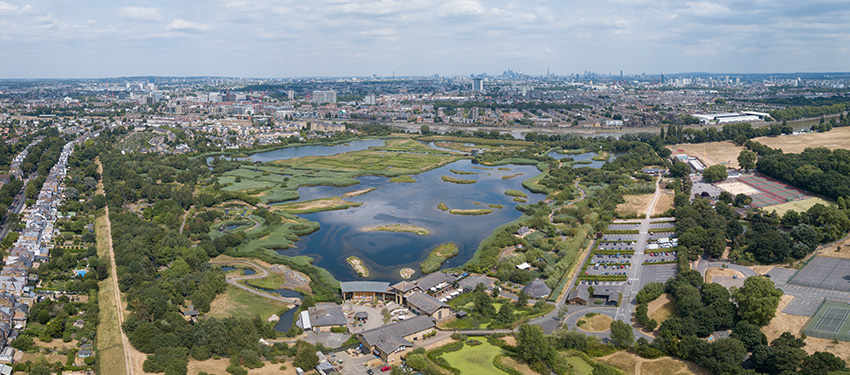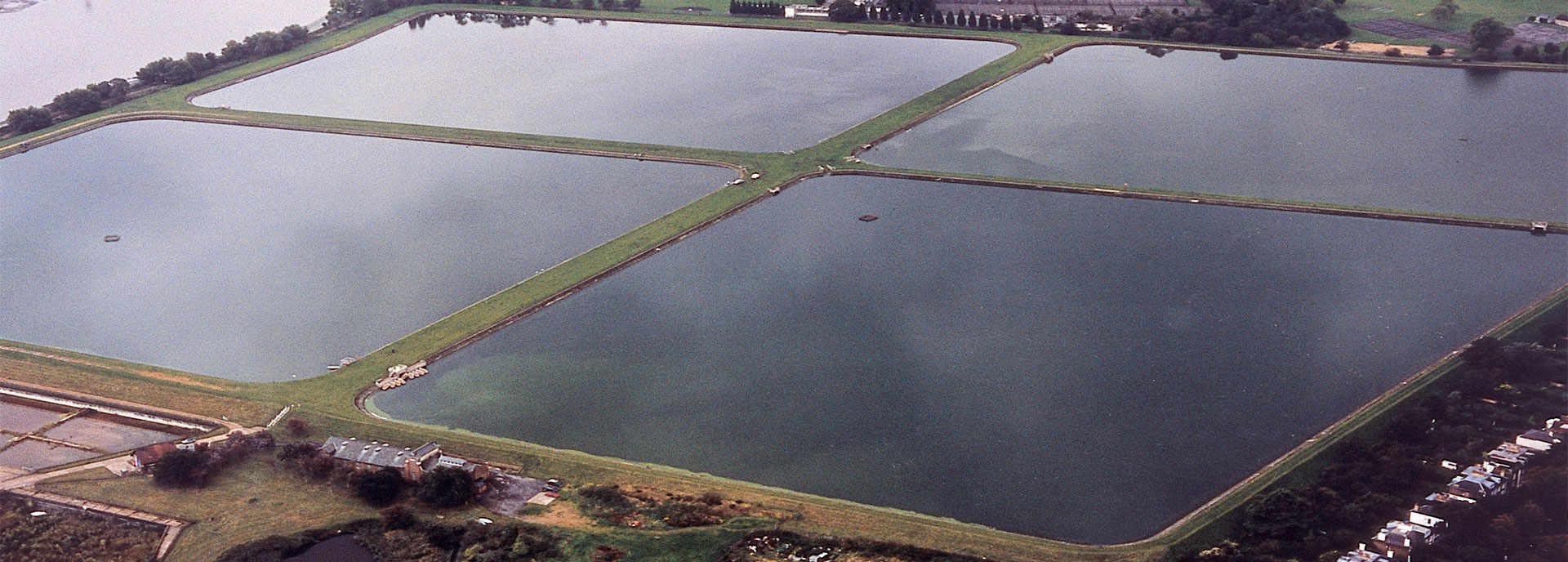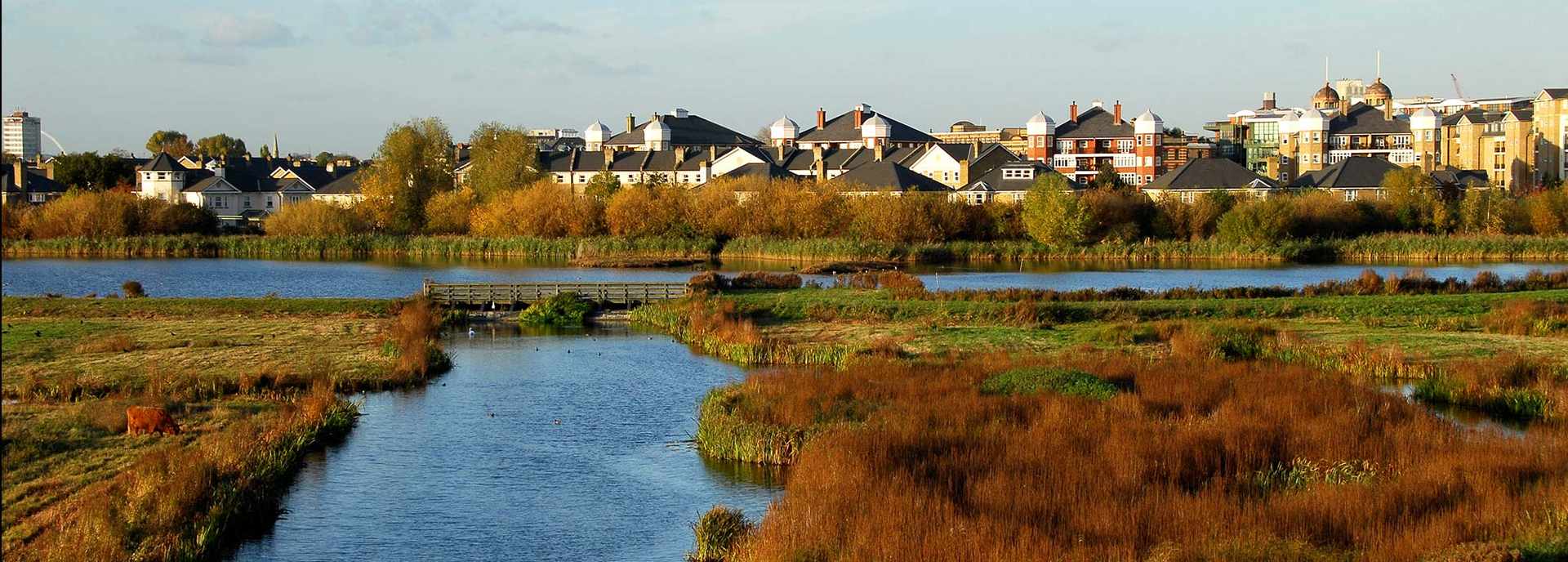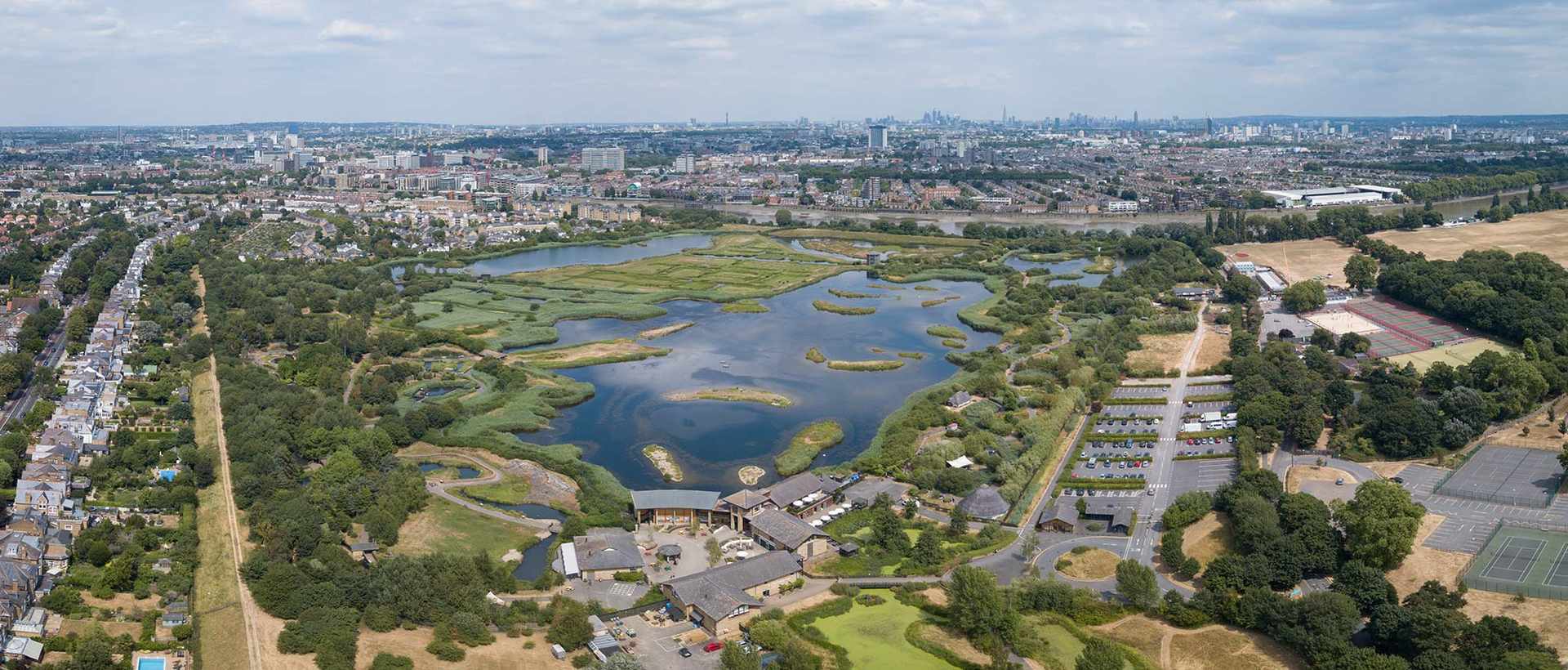Conservation charity WWT led the pioneering project to create the 47-acre wetlands, which sought to bring threatened wetland wildlife to the heart of London. Today, the reserve is an ecological oasis, teaming with biodiversity, and provides a beautiful setting where people can connect with nature and learn about conservation.
Before: disused concrete reservoirs (Image source: London Wetland Centre)
The project began in 1995 by breaking up four disused reservoirs and sorting 500,000 cubic metres of soil. During the next five years over 300,000 water plants, 8000 wild flowers and 27,000 trees were planted by hand.
Under the supervision of the WWT, and working to extremely rigorous environmental protection working practices, Berkeley delivered the wetlands supporting infrastructure, including 27 bridges, 600 metres of boardwalk and 3.4 kilometres of pathways, alongside six bird watching hides and 27 water control sluices.
Berkeley also delivered the 2,500 square meter Sir Peter Scott Visitor Centre, a renowned venue for environmental education with views across the inspiring wetlands waterscape.
Immediately next door to the wetlands, Berkeley built 230 high quality homes and riverside apartments, set among landscaped streets, crescents and a village pond. Called Barnes Waterside, this residential development helped to fund the creation of the London Wetlands Centre.
When it opened its doors in 2000, London Wetland Centre was the largest man-made wetland in any capital city of the world, with a beautiful network of shallow pools and wetland meadows for birds, mammals, amphibians, reptiles and insects.
London Wetland Centre: Barnes Waterside
Within two years of opening, London Wetland Centre was awarded Site of Special Scientific Interest (SSSI) status, owing to the emergence of an impressive number of wintering shoveler and gadwall ducks. David Attenborough, who opened the reserve, called it 'London's extra lung'.
Twenty years on, the centre boasts 2,399 wildlife species. Cetti's warbler, bearded tits, shoveler, grebes, water vole and bittern - once extinct in the UK - can now be spotted.
London Wetland Centre (Image: Sam Stafford)
For more information on the WWT or the London Wetland Centre visit wwt.org.uk/london.
For more information about Berkeley Group's approach to supporting nature visit Creating Net Biodiversity Gain page.



